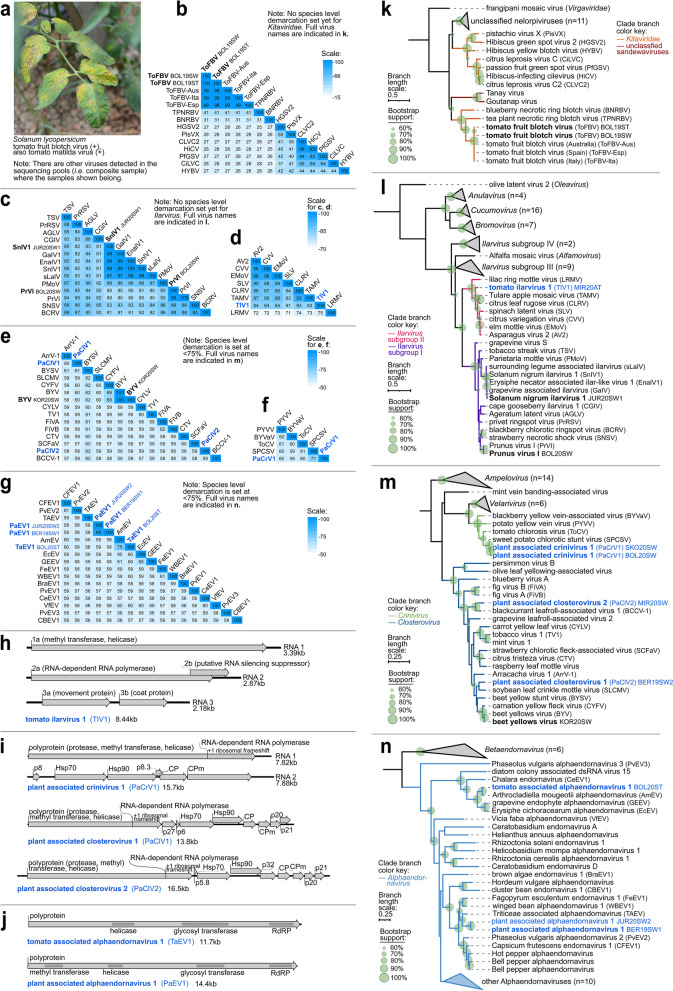Fig. 6.
Characteristics of (+)ssRNA viruses under order Martellivirales from the present study. a Photograph of one of the symptomatic tomato samples that tested positive for ToFBV in RT-PCR assays. b–g Heatmaps showing the pairwise identities to distinguish different Blunervirus (Kitaviridae) (b) and Ilarvirus (Bromoviridae) (c, d) species based on alignment and comparison of RdRp amino acid sequences, members of Closterovirus (Closteroviridae) (e) based on full genome nucleotide sequences, members of Crinivirus (Closteroviridae) (f) based on full RNA1 segment nucleotide sequence, and members of Alphaendornavirus (Endornaviridae) (g) based on full genome nucleotide sequences. h–j Genomes of the novel viruses, with the predicted open reading frames, protein domains, and genome size. k–n Maximum likelihood phylogenetic trees constructed based on the conserved amino acid sequence of the RdRp of k Kitaviridae, l Bromoviridae, m Closteroviridae, and n Endornaviridae. Branch length scale represents amino acid substitution per site. Indicated after the acronym are the isolate IDs of the viruses. Virus names and acronyms in blue bold font are the novel viruses, while those in black bold font are known viruses from the present study. Full virus names of those abbreviated in the pairwise identity matrices (b–g) can be found in the genome organization and phylogenetic trees (h–n)

